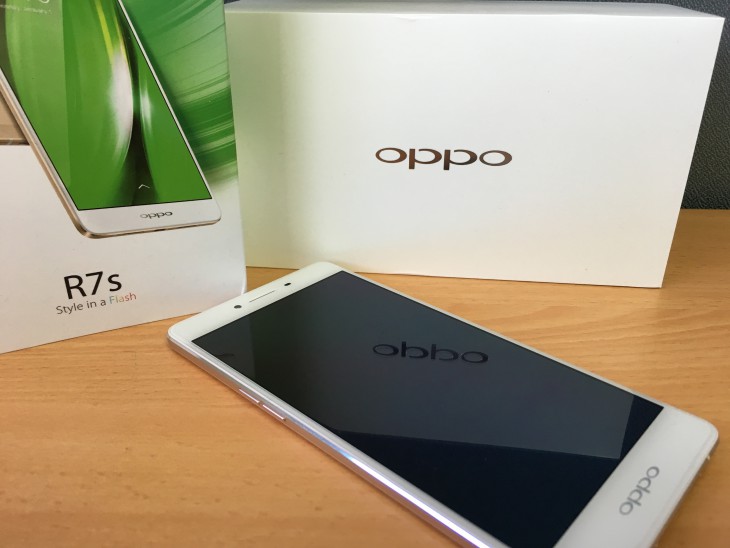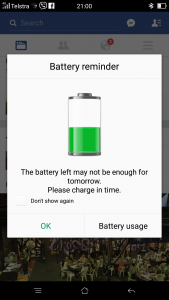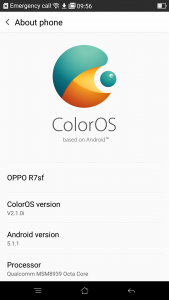
Oppo are huge in China, but they haven’t quite reached the same level of huge elsewhere. At least, they haven’t caught up with the likes of Samsung, Motorola, Huawei, or HTC just yet. The name doesn’t really excite too many people and without a real blockbuster phone to their name to date, that’s probably a fair reaction to have.
With the Oppo R7S, this needs to change.
The R7S is quite a surprise package at a pretty reasonable price of $529 for a sharp spec phone; Oppo have done a lot of things very right with this phone and (as long as it has marketing and a sales channel to back it up) could certainly be a great step towards Oppo’s growing brand recognition in the Australian market becoming stronger.
- Outstanding battery life
- Really solid build
- Great looking phone
- Responsive cameras that produces great photos
- Colour OS
- CPU is a bit under-powered for the device
- Speakers are quite tinny for audio playback
Hardware
The R7S feels solid in your hand thanks to the magnesium-alloy metal unibody design and has enough weight for it to not feel like a toy, but not bulky enough to feel like you’ve gone back 5 years in mobile phone technology — a fine line to walk. However, what felt truly astounding the first time I picked up the phone was just how thin it is – 6.95mm thin to be precise and it really does feel great with the metallic finish around the edges which is where you’ll find the power and volume controls. I have a personal preference to a button layout like this one where (for right hand use) your thumb naturally falls to the power button and just below the volume rocker. This just feels like a really natural flow and prevents; as is the case with some devices for fat fingered users like myself, your finger accidentally turning the in call volume down.
As seems to be a growing trend with devices, the headphone jack resides on the top of the device oriented to the left of that edge. On bottom of the device you’ll find the MicroUSB charging port in the centre and the device speakers on either side of it. The edges are a really slick and finished nicely with a metallic look which adds to the solid, premium feel you’re getting from the device.
Screen
The 5.5” screen running 1200 x 1920 resolution @ 401 pixel density and as a result of the resolution and high pixel density is really easy on the eyes. It’s not just how clean the images and video playback are that gives the R7S a good look, but the fluidity of change and the response to touch is speedy and accurate. This alone is a recipe that pretty much any average user is going to really like, it ticks all the boxes with video playback, great display of static images, and more than acceptable resolution.
When you’re talking about screen capabilities one of the other real stand out issues for many users beside display resolution is daylight visibility. This is probably the one area where the screen is a touch lacking for two reasons. The first is that the auto brightness is too slow to respond if you change from an indoor environment to an outdoor bright sunlight area which is a little frustrating but easily overcome by manually adjusting or just waiting for 15 seconds or so for the adjustment. The second is that the screen just isn’t bright enough in a really sunny environment, you’ll find yourself shielding the screen or seeking a bit of shade if you need to read more than a word or two. The brightness (or lack of) certainly isn’t a deal breaker for most users, but it does take a little of the shine off of what otherwise is a well delivered great screen on a solid device.
Battery life
What has really impressed me with everything so far is the battery life that I’m getting from the device. At 3,070 mAh its hardly the biggest battery going around but the system seems well optimised to minimise the battery waste and after a few days of tinkering constantly I’ve settled back into a normal use pattern. On what I have as a normal pattern of use, I’m getting 2 days out of the R7S which even a genuine flaghship like the Note 5 couldn’t deliver to me.
The disclaimer on the 2 days is that on the second day, you may find you’re charging in the evening instead of bed time and if you have an unexpectedly busy day on day 2, you may get caught out and run out of battery late in the day. A great feature to avoid this though (you’ll need to turn this on in Settings) is based on your usage pattern, the phone will tell you in the evening if you’re unlikely to make it through the next day without charging the device.

What really caught my attention with the R7s is the speed of charging when you use the supplied charger. VOOC charging is quick — really quick. If you’re just after a quick top up to make sure you get through the day I plugged in for 17 minutes and added 35% to the battery and if you’ve got 30 minutes to spare you’ll go from dead flat to at least 75% which I tested; from 2% battery, plugged in for a carefully timed 30 minutes I then had 81% battery which is an astounding achievement if you really struggle to get through a day with a single charge.
Camera
After working with Chris to express why the Nexus 5X was a disappointment to many and our merciless stance on the camera which should be good but actually really isn’t, I have to really give the camera on this phone a big wrap. The results are extremely good, the user interface is excellent and the performance of the software – particularly the responsiveness of it is nothing short of brilliant even in what is pretty poor lighting conditions.

When the camera software on the R7s got really exciting for me personally was when one of “those” moments with my kids happened and I got my first taste of flash shot. It’s their own technology that gives you quick launch of the application and .3 of a second focus time so from the time you launch the camera app, you really can be taking photos in a matter of a second or so and the focus on moving targets comes relatively close second to the LG G4 and Samsung’s recent efforts in the S6 range and Note 5.
Connectivity
There really weren’t any surprises for me when it comes to the connectivity options on the Oppo R7s. 802.11 a/b/g/n/ac Wi-Fi, Bluetooth 4.0, GPS and a full set of cellular connectivity options – GSM: 850/900/1800/1900 MHz, WCDMA: 850/900/1900/2100 MHz, 4G LTE: 1/3/5/7/8/28/TD-38/39/40/41. You won’t get stuck if you’ve got a Micro SIM or Nano SIM because both options can be utilised thanks to the Micro SIM slot doubling as a second SIM slot. All in all, a solid effort that won’t leave you wanting for anything that is really clearly missing from most users day to day use needs.
Sound
For a phone that nearly shows itself as a premium device, my expectations were fairly high and for the most part the audio capability of the R7s delivered. The external speakers are loud enough that you won’t need the vibrating alert to know your phone is ringing and in a quiet environment you’ll certainly need to turn the volume down. But the volume is not the main highlight with the sound, the call quality (while dependant on network) is outstanding and the audio playback via headphone output or via the external speakers is also very good.
Don’t get me wrong, the playback isn’t going to electrify your senses but for a speaker thats about the size of a fingernail it does very well even if it is a little tinny. The volume is plentiful which was already mentioned and the vocal range for music is really solid and clean and the high range is clear without becoming shrill at high volume. Where this; well… every mobile phone speaker falls down in sound playback is the bass, or lack of which prevents it from being an immersive experience.
One issue I did discover after prolonged playback via the headphone jack is that the phone occasionally drops some of the audio channels and requires a reboot of the device to resolve it. The likelihood is that most users aren’t going to find this issue; while it’s worth a mention its unlikely a deal breaker for anyone.
Performance
While the phone specifications put it at the sharp end of the mid range, the Snapdragon 615 CPU does let it down a little; a newer, quicker CPU might have been preferable, but when you get your hands on the R7S does a great job of delivering the performance that users expect of mobile phones now.
This would undoubtedly be aided by the 4GB of RAM that has been put in the device. Even with a reasonable number of apps loaded in the background I am yet to see any lag in switching between apps or even loading fresh ones, although loading high memory use apps such as games does take a touch longer than other devices I’ve used in the past – that’s what happens when you use a lower end CPU.
If you’re a fan of lots of storage the option is available to either have a second SIM in the device or use the SIM2 slot for a MicroSD card, but storage can be a great option to keep apps and storage of photos, music and movies off your device which long term means your performance will remain at a higher level.

Software
I’m just going to say it that Colour OS is not my favorite OEM release of Android; in fact it doesn’t even rate a mention. Much like Huawei’s EMUI I find it to be a bit clumsy, unpredictable and difficult to use compared to the work flow you’ll get from other manufacturers versions. For the most part I have solved this by dumping a new launcher on the device; Action Launcher 3 which has 98% cured what makes Colour OS feel so clumsy with menus, widgets and shortcuts behaving more predictably and immediately changing my perception of the phone.
Android OS
This isn’t just a basic use device, its nearly a premium device and the software is one of the factors holding back from that since its running Android 5.1.1 Lollipop out of the box. Marshmallow has been out long enough that the Oppo R7S could have 6.0 Marshmallow on it but sadly does not which may have some (although likely it will be minimal) effect on the ultimate sales results. I’ve been playing and tweaking some of the software settings along the way and after a bit of adjustment I’ve found that it could actually be a really good device for someone who need a solid performing device with great battery life. In hindsight, the Oppo R7S feels like what I hoped the Nexus 5x would be.

Skins
Over the last couple of years I’ve softened to some of the manufacturers Android skins, particularly Sense and Touchwiz but at the present time ColorOS has yet to win me over. The presentation is quite acceptable but the issue that I have is that the menu systems are segmented more (however logically) than other OEMs do however, their customisation options are spread out throughout these menus which seems a little counter-intuitive.
The navigation is not so complex that you struggle to find options, but the setup is quite detached in areas from what users would recognise as the norm. What will be more of an issue for many users inside ColorOS than the menus is the automated disabling of apps and preventing them from using background data. For some apps this is fine, but for others its crippling to your needs.
This runs true for several apps but the ones I found most frustrating to have this issue is Twitter, Telegram (used heavily for communication within the Ausdroid team) and Hangouts which I use to communicate with a number of friends. There is a way around this though, for anyone who is yet to find it in settings —> Application Management —> Running applications and hit the “lock” button next to the running app that you wish to keep running full time.
Like many instances of OEM launchers, its not going to be to everyones taste so (after a short period of soldiering on with the stock option) I dropped Action Launcher on there which makes the behaviour very predictable and comfortable to me and for me it significantly improved the experience.
Bundled Apps
This is where Oppo have things very, very right with ColorOS. When it come to bundled apps on the R7s there’s really not a lot to talk about outside of the expected Google Apps. Like their competition, Oppo have their own take on what a calendar should be, an internet browser (just install Chrome!), Calculator, their own email client and a weather app. Each of the include applications on the device out of the box are quite capable of their intended function but to be brutally honest; there’s better on the Play Store that will only cost you a few bucks.
Oppo R7S
- 5.5″ 1080p AMOLED display w Gorilla Glass 4
- Octa-core MSM8939 (Snapdragon 615)
- 4GB RAM
- 32GB Storage, microSD in second SIM slot
- 13MP f/2.2 rear camera
- 8MP f/2.4 front camera
- 802.11 a/b/g/n/ac Wi-Fi, Bluetooth 4.0, USB-OTG
- GPS
- Cellular:
- GSM: 850/900/1800/1900 MHz
- WCDMA: 850/900/1900/2100 MHz
- 4G LTE: 1/3/5/7/8/28/TD-38/39/40/41
- Micro SIM, Nano SIM
- Android 5.1, Color OS
- 3,070 mAh battery with VOOC rapid charging
- 151.8 x 75.4 x 6.95mm, 155g
- Case included in box
The design progress that Oppo have shown over the last 18 months or so are staggering; for a once shunned “Cheap Chinese Manufacturer” to now be recognised more globally as an up and coming player in the field is a tremendous leap forwards. That leap will undoubtedly be consolidated by delivering a device like the R7s which in most respects is a really solid mid range phone that could nearly be thought of as a high range device if it weren’t for the CPU being under powered.
When it comes to the almighty dollar, if you used the device then went looking for it, based on the user experience and performance you’d be stunned at just how cheap the R7s is at retail shops. Dick Smith are currently selling them for $423.20 or if you’re more inclined to follow a retail path that will have warranty and after sales service in 6 months or so you can pursue any of the online retailers within Australia or purchase it from the Oppo Online shop for AU$529 and is available in either gold or silver. Unfortunately at the moment there aren’t any options with the carriers to pick the R7s up on a 24 month contract which could certainly entice more buyers who are looking for a new phone that offers them really good bang for their buck.
Would I buy one?
I probably would, yes.
The Oppo R7S can be cheaper and is a better experience than the LG Nexus 5X I’ve only had for a few months. Its impressive that Oppo have done such an outstanding job of delivering what could be considered very close to a premium device with an easy on the eyes screen, amazing battery life (with just as astounding charging speeds on VOOC) and delivered this all at the cost of a low to mid range device. A couple of corners have been cut in the specs and you’ll notice this if you play a lot of games or are a processor intensive user; multitasking and switching between apps a lot but that is unfortunately the price you pay for not wanting to pay the price of a premium device.

























Phil – probably the best review I have seen for ages. If the R7s came out before the R7 Plus I probably would have bought it on your review, but settled on the Plus. I have been looking toward Oppo since the Find 7 came out. The R7s would be closer to the sweet spot for handling / pocket size and features (and same Oppo build quality) for a great asking price. Now waiting the imminent arrival of the R9 series and even the Find 9 if that ever turns up later. ps – go #222.
Come on Phil. The screen resolution is 1920 x 1080 not 1920 x 1200. Mi Band 2 is actually Mi Band 1S too, remember……
Thanks for the review. Genuine question that’s probably been discussed a million times before: why do these OEMs insist on perverting the pure Android experience? Surely the price point of their phones would be even better value if they weren’t wasting time and money on developing their own flavour of Android?
The OEMs don’t really answer that directly, but talk about providing value added services through their OS modifications. Case in point is Xiaomi who don’t make a huge amount of money off their handsets, but make money from the theme store and other software sales tied to the operating system.
The design and aesthetic doesn’t really appeal to our design sensibilities but in other markets, this style is definitely appreciated. In terms of this though, Oppo is working on generic AOSP style ROMs for their phones to add a more stock Android experience.
Hope that helps.
Thanks Daniel
those bezels makes me stop looking at it
I wonder if the phone would’ve benefited from having a Snapdragon 650 and 3GB of RAM as opposed to the included Snapdragon 615 and 4GB of RAM. I don’t know if the cost would’ve worked out the same. I’m cynical about whether most people need more than 3GB of RAM in a phone. Many laptops only come with 4GB! I tried ColorOS on my OnePlus One and found that it was similar to other Chinese ROMs used by Xiaomi, LeTV, Lenovo and Asus. For some reason, they’re all extremely similar. ColorOS is probably the best of the ones I listed;… Read more »